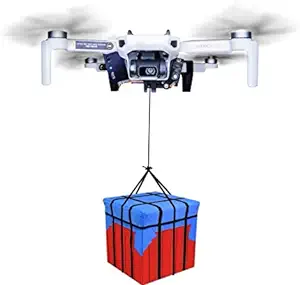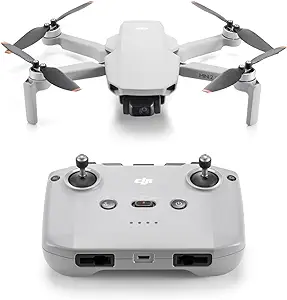The future of delivery drones: How they will revolutionize logistics
Overview of delivery drones
Delivery drones are unmanned aerial vehicles that are revolutionizing the logistics industry. These drones are equipped with advanced technology, including GPS navigation systems and obstacle avoidance sensors, allowing them to autonomously navigate through the skies. They have the potential to deliver packages and goods quickly and efficiently, bypassing traffic and reducing delivery times. Delivery drones offer numerous benefits, including cost savings, reduced carbon emissions, and increased convenience for customers. They are particularly useful in remote areas or during emergencies when traditional delivery methods may not be feasible. As the technology continues to advance, delivery drones are becoming more reliable, capable of carrying heavier payloads, and extending their flight range. The future of delivery drones holds great potential for transforming the way goods are transported and delivered.
Brief history of delivery drones
The concept of delivery drones dates back to the early 2010s when companies like Amazon began exploring the idea of using drones for package deliveries. In 2013, Amazon CEO Jeff Bezos announced plans for the Prime Air delivery service, sparking widespread interest in the potential of drone delivery. Since then, numerous companies, including Google, UPS, and DHL, have joined the race to develop and deploy delivery drones. The technology has rapidly advanced, with improvements in battery life, flight stability, payload capacity, and autonomous navigation. Regulatory bodies have also adapted to accommodate the rise of delivery drones, establishing guidelines and regulations to ensure safety and privacy. Today, delivery drones are already being tested and deployed in various parts of the world, showcasing their potential to revolutionize the logistics industry.
Advantages of Delivery Drones: Exploring the Potential of Delivery Drones for Sale

Increased speed and efficiency
Delivery drones have the potential to revolutionize logistics by significantly increasing speed and efficiency. Traditional delivery methods often face challenges such as traffic congestion and limited accessibility. With delivery drones, these obstacles can be overcome, allowing for faster and more efficient deliveries. Drones can navigate through congested areas and reach remote locations that are difficult to access by road. This means that packages can be delivered in a fraction of the time compared to traditional methods, reducing delivery times from days to hours or even minutes. By incorporating advanced navigation systems and artificial intelligence, delivery drones can optimize routes and avoid obstacles, further enhancing their speed and efficiency.
Cost-effectiveness and reduced carbon footprint
In addition to increased speed and efficiency, delivery drones offer cost-effectiveness and contribute to reducing the carbon footprint of logistics operations. Traditional delivery methods often involve a fleet of vehicles, which require fuel and maintenance costs. Delivery drones, on the other hand, have lower operational costs as they require less energy to operate and maintain. Moreover, they do not contribute to traffic congestion and emissions associated with traditional delivery vehicles. By utilizing delivery drones, companies can save on transportation costs and reduce their environmental impact. This shift towards drone delivery can lead to a more sustainable and eco-friendly logistics system.
Challenges and Solutions
Regulatory hurdles and airspace management
Delivery drones have the potential to revolutionize logistics by offering faster and more efficient delivery options. However, one of the biggest challenges that need to be addressed is the regulatory hurdles and airspace management. As the number of delivery drones increases, there is a need for strict regulations to ensure safety and prevent collisions. Government agencies are working on developing guidelines and rules for the operation of delivery drones.
Airspace management is another crucial aspect that needs to be considered. With an increasing number of drones in the sky, it is essential to have a system that can effectively manage the airspace to avoid congestion and ensure smooth operations. Technologies such as geofencing and air traffic control systems specifically designed for drones are being developed to address this issue.
Safety concerns and privacy issues
While delivery drones offer numerous benefits, there are also concerns regarding safety and privacy. Safety is a significant concern, especially in densely populated areas. Measures need to be in place to prevent accidents and ensure the safety of both the drones and the people on the ground. This includes collision avoidance systems, robust communication protocols, and training for drone operators.
Privacy is another important issue that arises with the use of delivery drones. Drones equipped with cameras can potentially invade people’s privacy by capturing images or recording videos without consent. Stricter regulations and guidelines must be established to protect individual privacy rights and prevent any misuse of drone technology.
Potential Applications of Delivery Drones for Sale

Last-mile deliveries
Delivery drones are set to revolutionize last-mile deliveries, offering a faster and more efficient solution for bringing packages directly to customers’ doorsteps. With their ability to bypass traffic and navigate through urban areas, delivery drones can significantly reduce delivery times and costs. Companies like Amazon and UPS have already started testing and implementing drone delivery services.
One notable product that can assist in last-mile deliveries is the O’woda Mavic 2 Airdropper Clip (ASIN: B07X98HMWQ). This accessory is designed to be used with DJI Mavic 2 drones, allowing users to drop items with precision. Its easy control and remote range matching the drone’s range make it a convenient tool for last-mile deliveries. Customers have praised its functionality and ease of installation, making it a highly recommended accessory for drone delivery operations.
Medical supply transportation
Delivery drones also have a significant potential to revolutionize the transportation of medical supplies. In emergency situations or remote areas with limited access, drones can quickly deliver essential medical supplies such as medication, blood samples, or even organs for transplant. With their ability to bypass traffic and reach inaccessible locations, drones can save critical time and potentially save lives.
While the O’woda Mavic 2 Airdropper Clip (ASIN: B07X98HMWQ) mentioned earlier is more suitable for last-mile deliveries, it may not be the ideal product for medical supply transportation. Specialized medical delivery drones designed to meet specific requirements, such as temperature-controlled compartments or secure storage for fragile items, would be more suitable for this purpose. However, it is essential to research and select the appropriate drone and accessories that cater specifically to the transportation of medical supplies.
Future Innovations and Developments
Autonomous navigation and AI integration
Delivery drones are at the forefront of autonomous navigation and AI integration, revolutionizing the logistics industry. These drones are equipped with advanced sensors and intelligent algorithms that enable them to navigate through complex environments and avoid obstacles with precision. AI integration further enhances their capabilities by enabling real-time decision-making, route optimization, and adaptive flight control.
With autonomous navigation, delivery drones can efficiently and safely deliver packages to their destinations, reducing human error and increasing efficiency. AI algorithms analyze data from various sources, including weather conditions and traffic patterns, to make smart decisions and adjust flight paths accordingly. This technology ensures reliable and timely deliveries, even in challenging conditions.
Swarm delivery systems
Swarm delivery systems take the concept of delivery drones to the next level by enabling multiple drones to work together in a coordinated manner. These systems utilize AI algorithms to manage the swarm, allowing drones to communicate, collaborate, and optimize their routes collectively.
Swarm delivery systems offer significant advantages in terms of scalability and efficiency. By distributing the workload across multiple drones, delivery capacity can be increased, allowing for faster and simultaneous deliveries to multiple locations. Additionally, the swarm can adapt to changing conditions and dynamically allocate resources, ensuring optimal performance.
Impacts on Logistics Industry: Delivery Drones for Sale

Job creation and redefining roles
With the rise of delivery drones for sale, the future of logistics is undergoing a transformative shift. One of the key impacts is the creation of new job opportunities and a redefinition of existing roles. While some may fear that drones will replace human workers, the reality is quite different.
The implementation of delivery drones will require a skilled workforce to manage and maintain them. From drone operators who monitor and control the flights to technicians responsible for repairs and maintenance, the industry will see an increase in specialized jobs. Additionally, there will be a need for professionals who specialize in drone logistics, such as route planners and coordinators.
Furthermore, traditional delivery roles will also evolve. Instead of physically transporting packages, delivery personnel can focus on customer service, ensuring smooth handoffs, and addressing any concerns. This shift will lead to job enrichment and a more efficient utilization of human resources in the logistics sector. Overall, the introduction of delivery drones will not only create new employment opportunities but also redefine the roles of existing workers.
Enhanced customer experience and market growth
The availability of delivery drones for sale will undoubtedly enhance the customer experience and drive market growth. With the ability to expedite deliveries and overcome traditional logistical challenges, drones offer a new level of convenience and efficiency.
First and foremost, delivery drones can significantly reduce delivery times. Whether it’s delivering a package to a remote location or avoiding traffic congestion in urban areas, drones can navigate swiftly and reach destinations faster than traditional delivery methods. This speed will revolutionize industries like e-commerce, enabling same-day and even on-demand deliveries.
Moreover, the use of drones will expand the market reach for businesses. Remote areas that were previously inaccessible or had limited delivery options can now be serviced effectively. This increased accessibility will lead to market growth as more customers gain access to a wider range of products and services.
Lastly, the novelty of drone deliveries will also attract customers and generate excitement. Businesses that embrace this technology can differentiate themselves from competitors, attracting tech-savvy consumers who value innovation and convenience.
In conclusion, the integration of delivery drones into the logistics industry will not only enhance the customer experience but also drive market growth. The speed, accessibility, and novelty of drone deliveries will create new opportunities for businesses and revolutionize the way products are transported and received.


